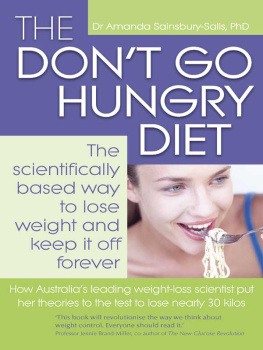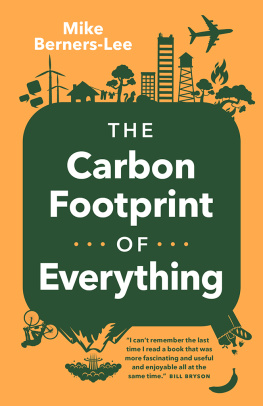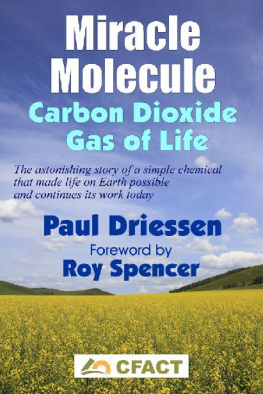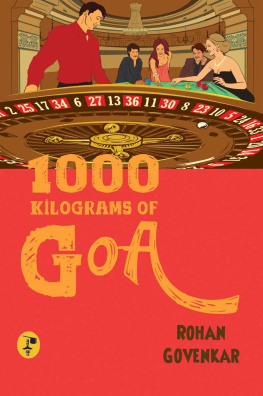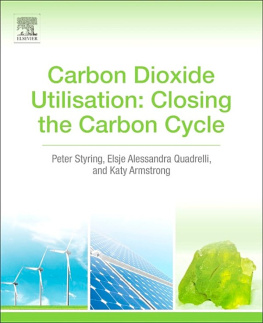
About the Book
When you lose weight, where does the fat go?
Most people assume it turns into heat and energy, but Albert Einstein showed us that diets would be devastating if this were true.
The correct answer is that fat is converted to carbon dioxide and water. Energy is released, but no mass is created or destroyed. This was known when the First Fleet sailed into Sydney and yet it took two more centuries for Ruben Meerman to show that precisely 8.4 kilograms out of every 10 kilograms of fat are exhaled, while the remaining 1.6 kilograms become crystal clear water. His calculations were published in The British Medical Journal in December 2014.
Meerman begins this diet mythbusting book by reminding us what we already know: that human beings are carbon-based, oxygen-dependent life forms. Where do the carbon atoms we exhale come from? Carbohydrates are hydrated carbon, and so are fats, whether theyre saturated or not. Eat less, and youll exhale the excess carbon stored under your skin.
Big Fat Myths lifts the veil on weight loss by tracing every atom you eat into and out of your body. Diet myths and wellness nonsense topple like dominoes along the way, restoring your confidence in common sense and the age-old wisdom that to lose weight, you simply need to eat less and move more.


Contents
Foreword
When someone loses weight, where does the fat go?
How do you think you wouldve fared with Rubens Big Fat Question? Would you have nailed it or perhaps fluffed it?
Before I introduce Big Fat Myths , please allow me to introduce myself. Im a biochemist and cell biologist, which means that I study life at the level of cells and molecules. My special topic is fats and how our bodies handle them. Ive been studying aspects of fats for three decades now, and have been teaching fat metabolism to science students at university for a dozen years. And yet Id never before come across Rubens Big Fat Question or, as weve come to call it, the BFQ.
In mid-2013, I was contacted by a researcher from ABC TVs flagship science show Catalyst , who told me that Ruben was doing a story about fat and wanted to talk to me, as a biochemist working in the area. I looked into Rubens recent work on the maths of weight loss and so was properly primed before the day of filming. This was probably just as well, as Im not sure how I wouldve responded to the BFQ if I had been put on the spot. (Correctly, I hope!) But that was when I first suspected that Ruben was onto something.
Some months later, I was attending a big scientific conference in the United States and thought that I would road-test the BFQ for myself. Now, I stress that this was in no way a scientifically controlled study I just strolled around the Nutrition section where researchers were presenting their work on posters. I approached any presenter who had the words overweight, obesity or weight loss in their titles. Most identified themselves as nutrition researchers and/or dietitians. I was stunned at their responses to the BFQ, because only one out of 21 got it right. As I said, it was very informal survey, but I knew for sure then that Ruben was really onto something. You might expect that someone who gives advice on weight loss should understand how it occurs, just as a doctor prescribing a medication should understand how it works. However, I realised that these are all smart people, and that the gap is in the way we teach this aspect of biochemistry.
Tracing the intricate biochemical pathways underpinning metabolism was a major triumph of twentieth-century science. Metabolic research is currently enjoying a resurgence, fuelled by new technologies and the cracking of the human DNA code. But the way we teach these pathways hasnt changed much since I was a student, some three decades ago. After all, biochemistry is a field that was first ploughed when starvation was a bigger problem than obesity, whereas now the opposite is true. And the way we teach biochemistry to the next generation of health professionals and researchers should be reframed to reflect this shift.
After filming the Catalyst story, I suggested that we try to publish Rubens story highlighting the surprising ignorance surrounding this topic in a learned journal. The first journal that we approached rejected it (par for the course in academic publishing). But Ruben suggested we aim even higher, and we were thrilled to have the work finally accepted in that august medical journal The BMJ , and even more thrilled when we learnt that it had made the famously quirky Christmas edition.
People, it seems, have an insatiable appetite for stories on food and diets, and the attention that followed publication of our BMJ article was huge. Its understandable everyone eats, and so everyone can relate to food and diet. However, on the flipside, anyone can also set themselves up as an expert and many do. And thus ensues a maelstrom of confusion: which foods to eat; which ones to avoid; which diets make you healthiest; which ones make you lose weight quickest Its bewildering, even to a professor who teaches on the stuff. And so a commonsense, no-nonsense examination of Big Fat Myths is timely.
A physicist by training, Ruben worked on lasers before becoming a science communicator. And he has used these skills and background to great effect in this book. As a physicist, Ruben brings an elemental and clear-eyed perspective to the topic of fats and fads that is both fresh and refreshing. He cuts through the Big Fat Myths with laser precision, laying bare the bones of fact and logic. As a consummate communicator, he brings a deft and light touch when explaining difficult concepts. We are often told to Enjoy in moderation, but with this book you can devour and enjoy it to your hearts content, safe in the knowledge that this is nourishing fare, full of fascinating facts and profound insights, including, of course, a comprehensive answer to the BFQ.
Andrew J. Brown, PhD
Professor of Biochemisty
University of New South Wales, Australia
June 2016
When you lose weight, where does the fat go? The question had never occurred to me until 19 March 2013, when I stepped on the scales and discovered Id lost 6.5 kilograms. I had been following the age-old advice to eat less and move more as part of my New Years resolution to stop smoking and lose some weight. The quitting part was going well, but my weight was on a notoriously slippery slope. Men gain an average of 2.8 kilograms after they give up cigarettes, and for women the figure is 3.8 kilograms.
It was only when I bought my first set of scales that I discovered I had been successfully losing weight at the slow and steady rate of 85 grams per day. Thats no world record but it was a huge relief because my body mass index (BMI) was 26.3 when I started, which is slightly overweight according to the World Health Organizations classifications. Thats nothing to panic about, either, but combined with my secret pack-a-day habit, I was setting myself up for one of the litany of completely avoidable lifestyle diseases plaguing the Western world. And then there was my ego. Id recently had the privilege of becoming Play School s first resident scientist. Being an overweight smoker was embarrassingly incongruent with my public persona.



